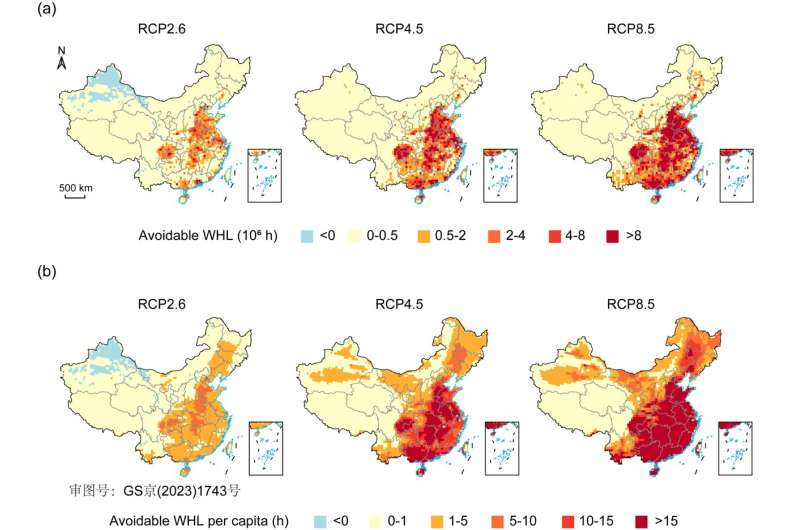This article has been reviewed according to Science X's editorial process and policies. Editors have highlighted the following attributes while ensuring the content's credibility:
fact-checked
trusted source
proofread
Future labor losses due to heat stress in China under climate change scenarios

Climate change is the biggest global health threat in the 21st century, and the rising temperatures have undermined the health and safety of the working population, as well as caused labor losses, which are closely tied to social-economic development. Although the future temperatures increase in China has been forecasted by state-of-the-art climate change projections, to what extent the influence on labor has not been well studied.
In a paper published in Science Bulletin, a Chinese research team presents evidence of future labor losses due to heat stress in China under climate change scenarios. This study was led by Cunrui Huang, a professor at the Vanke School of Public Health, Tsinghua University.
They found that climate change will exacerbate heat-related work hours lost (WHL) in China, even with a reduced working population in the future. The southern, eastern, and central provinces of China are the most affected, which is largely due to their higher temperature exposure, larger population size, and higher shares of vulnerable populations in total employment.
However, limiting global warming to 1.5°C would yield substantial gains. Compared to RCP2.6, RCP4.5 and RCP8.5, all provinces can avoid an average of 11.8%, 33.7%, and 53.9% of annual WHL if achieving the 1.5°C target, which is equivalent to avoiding the losses of 0.1%, 0.6%, and 1.4% of annual GDP in China, respectively.
The research provides robust evidence for policymakers to understand the severity of future heat-related labor losses due to climate change in China. Stringent mitigation policies coupled with effective adaptation measures are therefore needed for protecting occupational health and work capacity in China. Each province should tailor occupational health protection measures to their circumstances. In addition, the findings are important for other developing countries with similar climate and demographic characteristics to China.
More information: Liangliang Cheng et al, Projecting future labor losses due to heat stress in China under climate change scenarios, Science Bulletin (2023). DOI: 10.1016/j.scib.2023.09.044
Provided by Science China Press


















